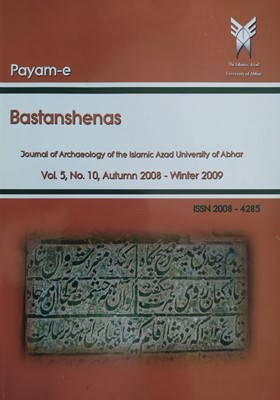-
-
List of Articles
-
Open Access Article
1 - Stratigraphy in Sounding one of Tapeh Borj Neyshabur, an Interpretive Approach
Omran Garazhian -
Open Access Article
2 - Relative Dating of Ghousha Tepe Shahryeri’s Ceramics
Hassan Derakhshi Alireza Hejebri Nobari Bahman Firouzmandi -
Open Access Article
3 - Placement Archaeological Sites of Bronze Age in Saimareh Valley with Geographical Information System
Khodakaram Mazaheri Rahim Nazari -
Open Access Article
4 - Study of the Stone Artifacts of Tepe Hissar, Damghan (4000-2000 BC)
Hamid Amanollahi -
Open Access Article
5 - Uruk Pottery, Based on Strip Survey of South Abu Fandowah Site, Khuzestan, Southwestern Iran
Aytakin Habibi Mohammad Karami -
Open Access Article
6 - A Typology for Iron Age Small Glazed Jars in Western Iran
Amir Sadegh Naghshineh -
Open Access Article
7 - Exploration and Comparison of Urartian Metal Findings of Northwest Iran, with Similar Exotic Case Studies
Seyed Ali Asghar Mirfatah Reza Saburi Nojehdehi -
Open Access Article
8 - Monumental Inscription of Akbar Shah's Ambassador in Soltanieh Dome (1012 AH)
Parastoo Ghasemi Andarood
-
The rights to this website are owned by the Raimag Press Management System.
Copyright © 2021-2025







